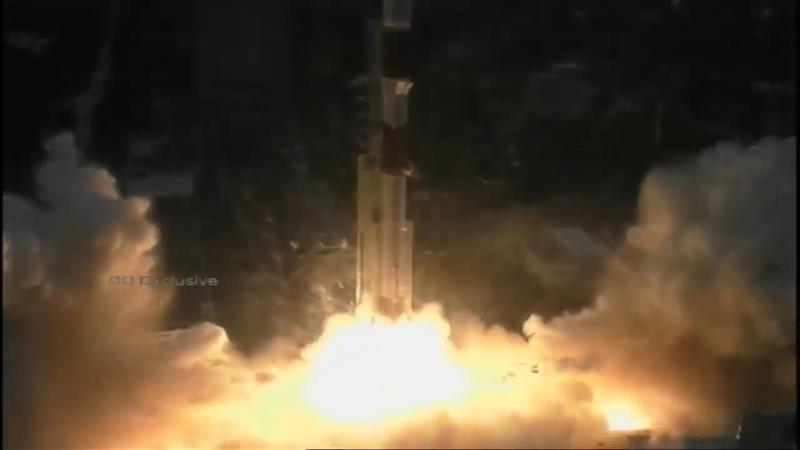India successfully launches earth observation satellite EOS-01, nine other satellites
Date:- 07 Nov 2020

India successfully launched its latest earth observation satellite EOS-01 and nine customer satellites on board its Polar rocket from the spaceport here on Saturday.
The Polar Satellite Launch Vehicle (PSLV-C49/EOS-01) blasted off from the Satish Dhawan Space Centre here at 3.12 pm at the end of a 26-hour countdown and injected the satellites into orbit one after another 20 minutes later.
The primary passenger of the 44.5-metre tall PSLV-C49 will be the Indian radar imaging satellite EOS-01 (formerly RISAT-2BR2) with synthetic aperture radar (SAR) that can shoot pictures in all-weather conditions.
The lift-off was originally scheduled for 3.02 pm but was delayed by 10 minutes due to debris on the path of the vehicle, ISRO said.
This is the first mission by the Indian Space Research Organisation (ISRO) this year.
EOS-01 is intended for applications in agriculture, forestry and disaster management support, the Indian Space Research Organisation (ISRO) said.
The satellite can take pictures day and night and will be useful for surveillance as well as civilian activities.
The customer satellites are from Lithuania (1), Luxembourg (4) and USA (4).
According to ISRO, EOS-01 is a 630 kg earth observation satellite, intended for applications in agriculture, forestry and disaster management support.
The nine foreign satellites piggybacking are from: Lithuania (1-R2, technology demonstrator), Luxembourg (4 maritime application satellites by Kleos Space) and the US (4-Lemur multi-mission remote sensing satellites).
The PSLV in normal configuration is a four-stage/engine expendable rocket powered by solid and liquid fuels alternatively. Six booster motors will also be strapped on to the first stage to give higher thrust during the initial flight moments.
But the 44.4-metre tall PSLV rocket that flew on Saturday was the DL variant having only two strap-booster motors. The lift-off weight of the rocket is 259 ton.
This rocket variant was used the first time to put the Microsat R satellite into orbit on January 24, 2019.
The Indian space agency has PSLV variants with two and four strap-on motors, larger PSLV-XL and the Core Alone variant without any strap-on motors.
The choice of the rocket to be used for a mission depends on the weight of the satellite and the orbit where the satellite has to be orbited. PTI/IANS
Courtesy: Daily Tribune: 7th November 2020


